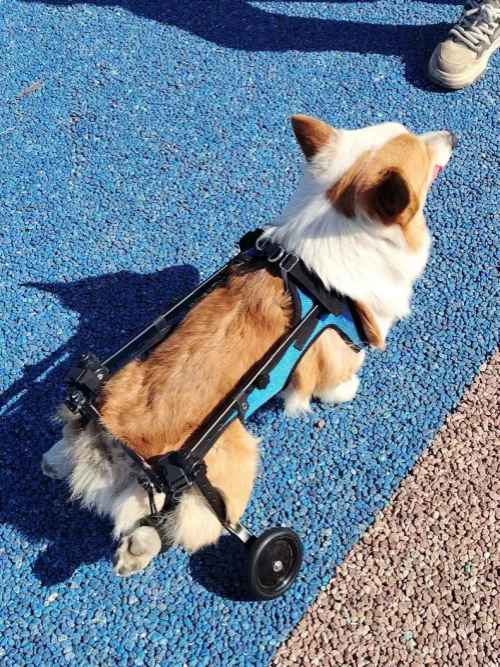
The Little Helpers: Choosing the Right Wheelchair for Small Dogs
Hey there, pet lovers! If you've landed here, chances are you're scouting for ways to boost the spirits and mobility of your small furry friend who might be battling with ailments like hip dysplasia, degenerative myelopathy, or even partial paralysis of the rear legs. Believe it or not, a top-notch dog wheelchair can work wonders. Let’s dive right into the nitty-gritty of how these gadgets can turn things around for your pet.
Wheelchairs: A Lifeline for Your Pet
When your dog’s hind legs start giving out due to tough conditions like hip dysplasia, degenerative myelopathy, or if they're dealing with paralysis of the rear legs, every single step can be a struggle. A high-quality wheelchair steps in to lift off some of that burden, letting your pal roam free without the ouch.
Finding the Perfect Fit: Wheelchair Styles
Rear Support Wheelchairs:
These are spot on for dogs that still have their mojo in the front legs but need a little help at the back. They prop up the rear while letting the front lead, making them perfect for pets with weak or paralyzed rear legs.
Full Support Wheelchairs:
Got a pooch needing a hand on all fours? This all-around support unit has got you covered, keeping them stable and safe on the move, ideal for pets with more extensive mobility issues.
Custom Wheelchairs:
Nothing beats a fit that’s made just for your dog. Tailored to the T, these chairs match your dog’s body like a glove, making sure comfort and mobility go hand in hand, especially crucial for pets with unique body shapes or severe rear leg paralysis.
FAQs: All You Need to Know About Dog Wheelchairs
Q: Can a wheelchair really help my dog?
A: You bet! If your dog’s been slowing down because of aching joints, weakening muscles, or paralysis of the rear legs, a wheelchair is like a new set of wings. It supports their body, eases the pain, and gets them back into action.
Q: How do I know if my dog is ready for a wheelchair?
A: Watch for signs like trouble standing up, walking, or a dip in activity levels. These hints might mean it’s time to chat with your vet about giving a wheelchair a whirl.
Q: How should I measure my dog for a wheelchair?
A: Grab a tape measure and jot down these numbers:
- Height: From the ground to the top of the hip, while they stand.
- Length: From the chest’s tip right to the tail’s start.
- Width: Across the hips, at the widest stretch. Snug measurements mean a snug fit—just what the doctor ordered!
Selecting a Quality Chair
Opt for a wheelchair crafted from materials that won’t weigh your buddy down yet can take a bit of rough and tumble. Adjustable bits are a plus, making sure the chair grows and adapts with your pet. Check out how wheelchairs have been a game-changer in our piece on How a Dog Wheelchair for Back Legs Revives Our Pet's Spirit.
Success Tales to Cheer You On
Take the story of Lily, the spirited Chihuahua with degenerative myelopathy. Once she got her custom-fit, feather-light wheelchair, she was zipping around her favorite park trails like old times. These stories aren’t just heartwarming—they’re proof that the right wheelchair can bring back the sparkle in your dog’s eyes, especially for those dealing with paralysis of the rear legs.
Wrap-Up: Is a Wheelchair the Right Move?
Thinking it might be time to gear up your dog with a new set of wheels? If they’re showing signs of needing a boost, a well-fitted wheelchair could very well be the ticket to a happier, more active life. Dive deeper into the bonds this journey can strengthen in our article on The Joy of Deep Connections as a Dog Parent. And if you’re looking for more tips on caring for your aging pal, don't miss Caring for Your Senior Dog: Essential Tips and Insights.








